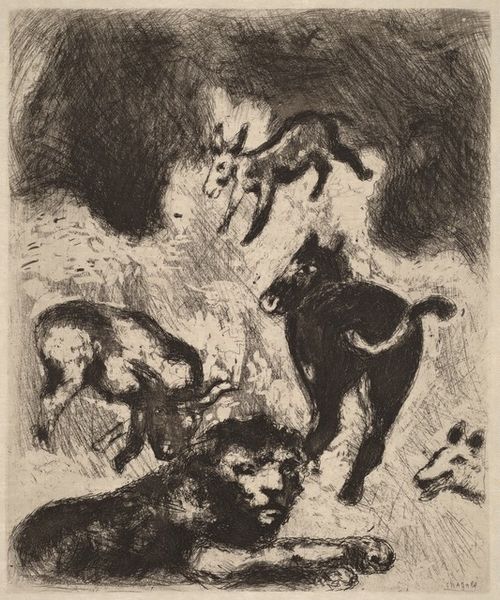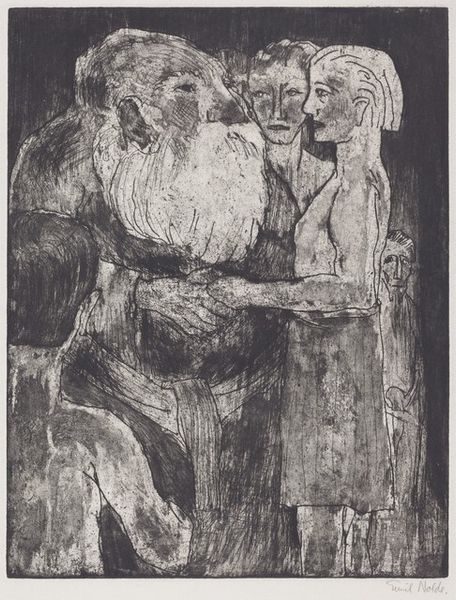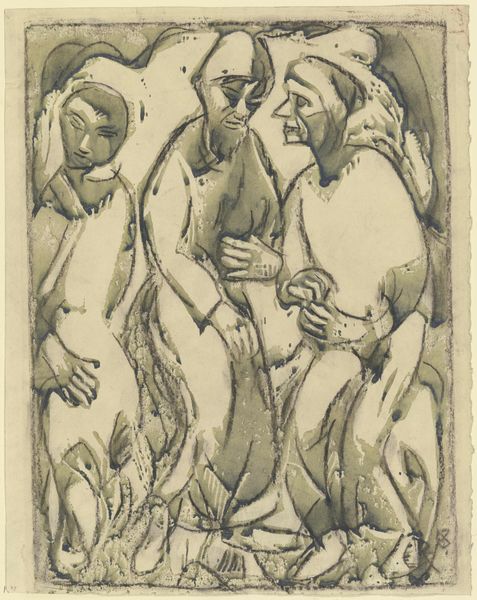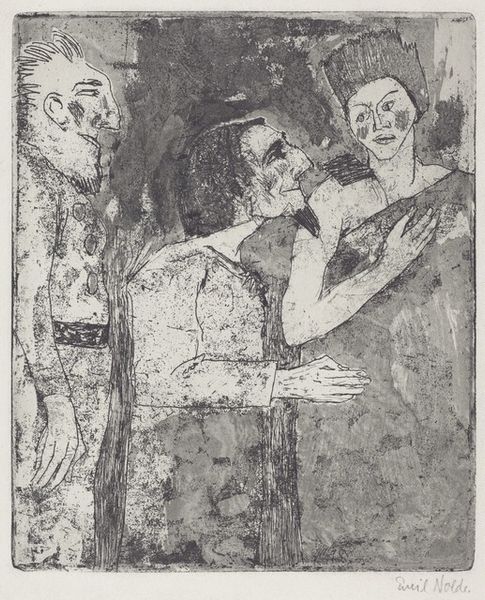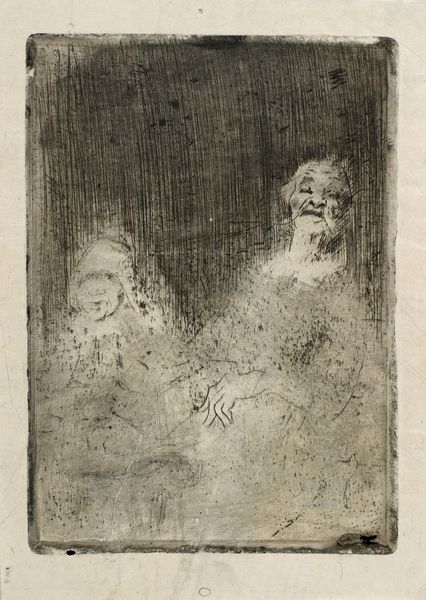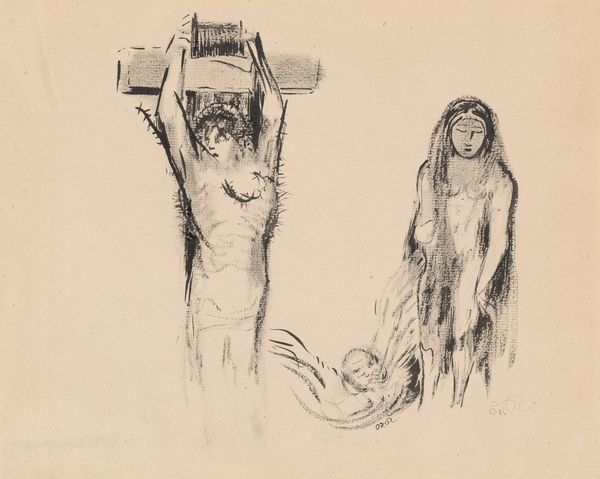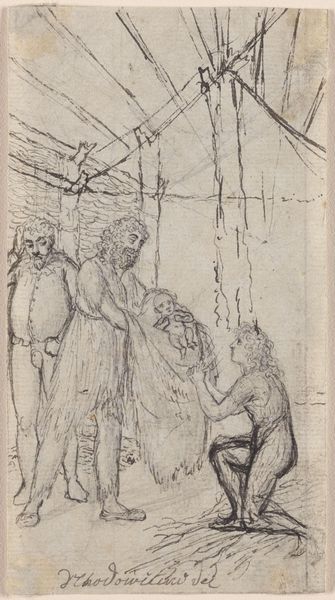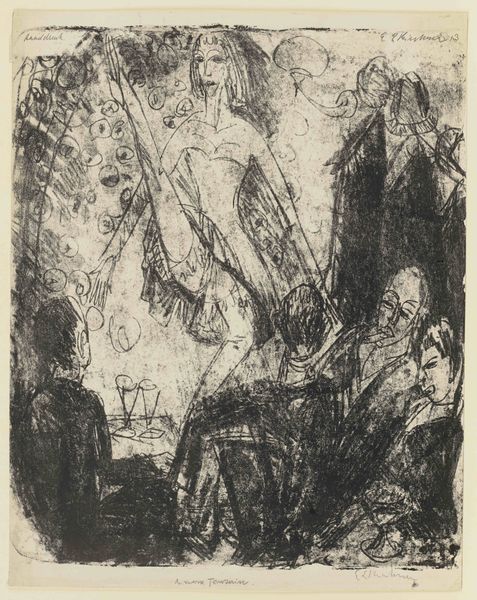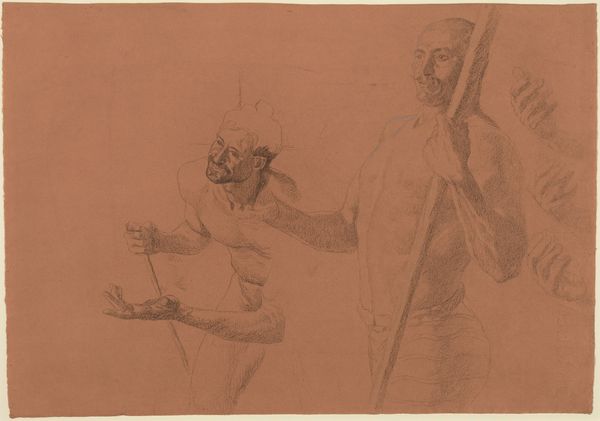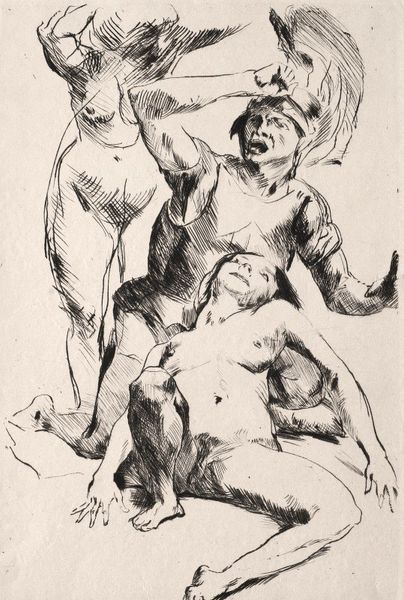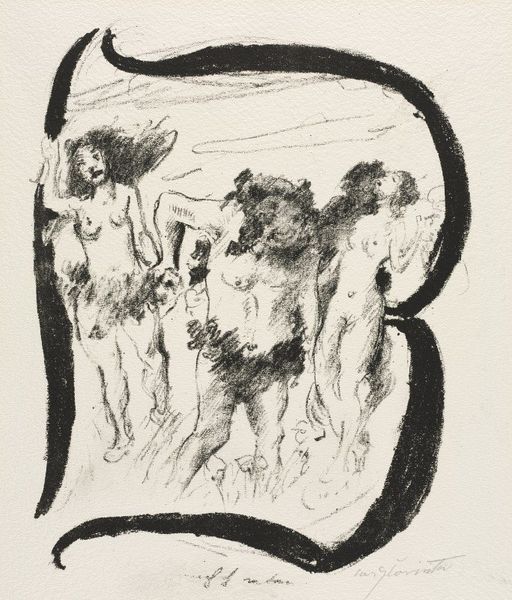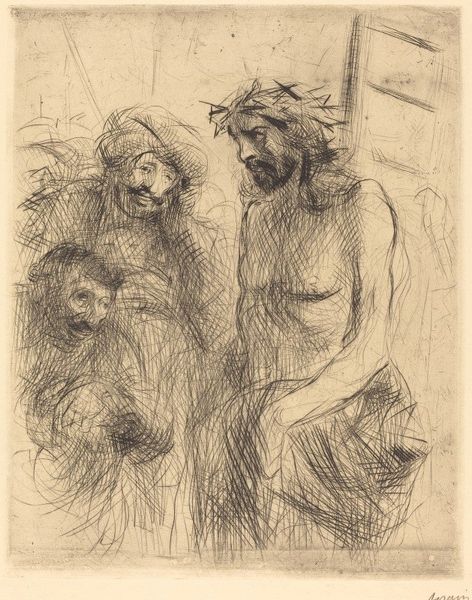
print, etching
#
portrait
# print
#
pen sketch
#
etching
#
figuration
#
expressionism
#
line
Dimensions: plate: 30 x 24.9 cm (11 13/16 x 9 13/16 in.) sheet: 60.2 x 45.3 cm (23 11/16 x 17 13/16 in.)
Copyright: National Gallery of Art: CC0 1.0
Curator: Here we have Emil Nolde’s "Siberian Squire," an etching dating back to 1918. Editor: Immediately, I’m struck by its rawness. The stark lines create such a severe contrast. What are we seeing, precisely? Curator: Indeed. We see two figures rendered in strong, expressive strokes typical of Nolde’s style. He truly embodies the tenets of Expressionism in his emphasis on capturing an internal psychological or spiritual state, and it can be viewed in relation to his series of religious-themed works. Editor: Right, because thinking of this work, one considers how its brutalist lines mirror social upheavals and a changing world, especially considering it was produced in 1918. What about the technical details of this print, curator? Is the line quality here evidence of its time? Curator: Yes. In examining the cross-hatching that constructs both figures, a symbolic struggle unfolds, as his use of contrasts embodies a certain tension through composition, especially evident when you look at the gaze they exchange that hints toward both disagreement, but still dependence. Editor: As to that tension, considering what’s missing becomes useful, too. The empty, washed-out space adds to the rough emotional quality of the final print. Curator: Agreed, the negative space serves to intensify the feeling of turmoil or disruption. But still Nolde, even with the seemingly rapid execution, is in no doubt using expressionistic and psychological devices to give the artwork added value, which would relate to an inner subjective experience that comes across to audiences on view. Editor: This brings me to how this piece fits within the Expressionist movement. One thinks about how printing in general relates to labour, process and even social class and even political events and struggles around World War One and in Russia. And this portrait speaks to social change happening at the time, specifically for peasant and working classes in Western and Eastern Europe. Curator: Quite true. The figures, despite their setting, are presented with dignity through compositional positioning, their heads held high. Editor: An incredible tension indeed. These visual forms have opened new dialogues that consider time, labor, context, expressionism, class. Thank you, curator. Curator: And thank you for elucidating those connections. It enriches how we consider the artist's technical choices.
Comments
No comments
Be the first to comment and join the conversation on the ultimate creative platform.
